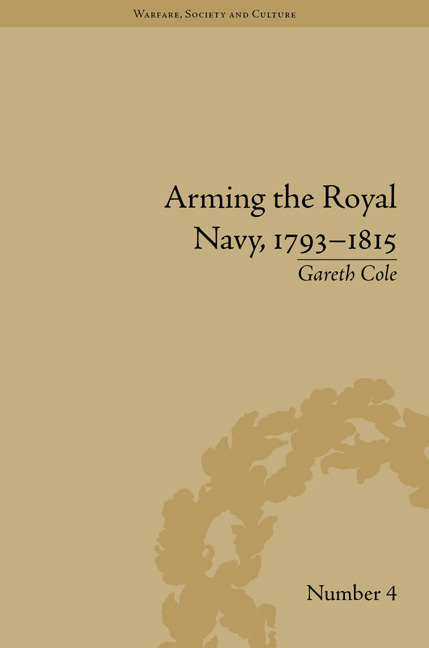Book contents
- Frontmatter
- CONTENTS
- Acknowledgements
- List of Figures and Tables
- Introduction
- 1 The Office of Ordnance and Its Mode of Operation
- 2 Ordnance Relationships with Other Government Departments
- 3 Relations between the Ordnance and Its Contractors
- 4 The Supply of Gunpowder to the Royal Navy
- 5 The Supply of Iron Ordnance to the Royal Navy
- 6 Ordnance Shipping
- 7 The Operations of the Ordnance Outports
- Conclusion
- Notes
- Works Cited
- Index
7 - The Operations of the Ordnance Outports
- Frontmatter
- CONTENTS
- Acknowledgements
- List of Figures and Tables
- Introduction
- 1 The Office of Ordnance and Its Mode of Operation
- 2 Ordnance Relationships with Other Government Departments
- 3 Relations between the Ordnance and Its Contractors
- 4 The Supply of Gunpowder to the Royal Navy
- 5 The Supply of Iron Ordnance to the Royal Navy
- 6 Ordnance Shipping
- 7 The Operations of the Ordnance Outports
- Conclusion
- Notes
- Works Cited
- Index
Summary
Introduction
Having previously examined the central Ordnance administration and its relationships with external bodies and the supply offices based at Woolwich, this chapter will examine and evaluate the workings of the Ordnance outports. In doing this the historian is fortunate that almost all of the records of the Portsmouth Ordnance Office exist in the National Archives and the Hampshire Record Office. In contrast, no records of the Plymouth Ordnance Office, also known as Morice Yard, have been found. The chapter will demonstrate that the offices operated effectively, if not always as efficiently as they perhaps could, and also that their autonomy, although theoretically limited, was actually quite substantial. Oliver Hogg has argued that ‘even centralization, that bugbear of earlier officialdom, had slowly crumbled under the assault of events and more latitude was being granted to local officers’. This conclusion is drawn from his experience of researching the Royal Arsenal at Woolwich. The Master-General and board seem to have given far more latitude to William Congreve, Thomas Blomefield, Thomas Dickinson and other military offices than anyone else. This was possibly because of their senior military rank. Two specifics exemplify this; when Blomefield was appointed Inspector of Artillery in 1780, the proof masters became directly subordinate to him, and not to the board; and in October 1804 the respective officers at Waltham Abbey were informed that Congreve was to order all issues and transfers of powder ‘in such a manner as he may deem best for the public service’.
- Type
- Chapter
- Information
- Arming the Royal Navy, 1793–1815The Office of Ordnance and the State, pp. 115 - 140Publisher: Pickering & ChattoFirst published in: 2014



